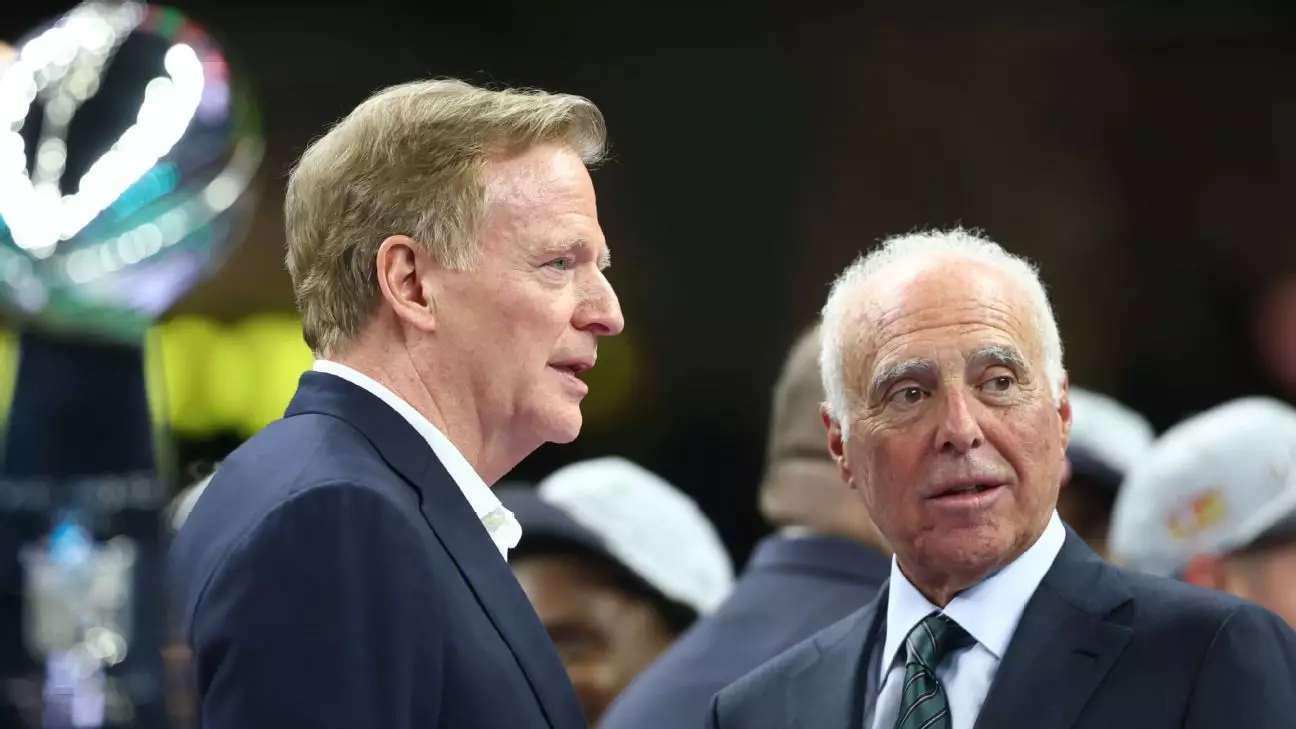The National Football League (NFL) is no stranger to heated debates and controversies, but the recent discussion surrounding the “tush push” takes the cake. At the league meeting in Eagan, Minnesota, a clash erupted between prominent NFL owners and league executives, exposing a rift that runs deeper than simple play strategy. Philadelphia Eagles owner Jeffrey Lurie’s impassioned defense of a play that’s garnered both praise and scrutiny showcases the complexities of a league desperately trying to balance entertainment with player safety. As an observer, this tug-of-war highlights the murky waters of power dynamics and the underlying motivations of key players involved.
Lurie’s Last Stand
Lurie’s animated speech resonated with the room like a thrilling fourth-quarter drive. He approached the podium fully aware that the odds were stacked against the tush push, a play that had allowed the Eagles to flourish. Drawing from the metaphor of a “wet dream,” Lurie described the rush of successfully executing a tactic so effective that banning it was the only avenue left for opponents. While his colorful choice of words raised eyebrows, it also spotlighted an uncomfortable truth: the calculated risk taken by teams like the Eagles, who thrive on improvisation and creativity within a rigid framework.
One could argue that Lurie’s analogy, clumsy as it may have been, encapsulated the fierce competitive spirit inherent in professional sports. He challenged the league’s leadership, suggesting that a ban would only serve to endanger quarterbacks—a demographic already under immense scrutiny regarding injury risks. In this age of player protection, Lurie’s comments served as a bold reminder that the sport is as much about risk-taking and innovation as it is about safety protocols.
The Tension Among League Executives
However, the response from NFL executives was equally revealing. Commissioner Roger Goodell and executive vice president Troy Vincent were quick to call out Lurie, with Vincent reprimanding him for his inappropriate comment in a mixed-gender environment. This reaction highlighted a critical dimension of the debate: the inherent power dynamics within the league, where tradition often battles modern sensibilities.
This clash was not merely about a single play; it illustrated a broader philosophical divide. On one side stood those advocating for player safety and a more sanitized version of the game, and on the other were the innovators willing to embrace the chaotic beauty that football can be. The very act of defining what is acceptable in the NFL serves as a microcosm for larger societal issues: how do we maintain tradition while also evolving towards inclusiveness and awareness?
The Role of Ownership and Influence
When Dallas Cowboys owner Jerry Jones posed questions about the tush push debate, his inquiries mirrored the concerns of many: where does the line fall between gimmicky tactics and genuine strategy? Meanwhile, Buffalo Bills owner Terry Pegula, despite personal prowess with the play, openly supported a ban, complicating the narrative further. This Samsonian contest among owners was marked by jockeying for power and influence more than by a genuine concern for safety or integrity of the game. The outcome, with the proposed ban falling far short of the required votes, raises questions about how effectively the league can implement reforms in an environment resistant to change.
In the arena of sports, as in politics, impactful debates often boil down to who holds the most power and who wields the loudest voice. The tussle over the tush push also serves as a stark reminder of the culture embedded within sports—what is celebrated, discouraged, and outright banned. It reveals the complex relationship between ownership and play style, showing that while the game evolves, the underlying power struggles remain steadfastly entrenched.
A Landscape of Unresolved Tensions
The fallout from this debate is far from ephemeral. The power dynamics, player safety issues, and philosophical divides within the NFL are likely to echo throughout the season and beyond. As teams jockey for supremacy on the field, the tensions and stakes off the field may just be as important. Lurie’s last-ditch effort highlights a desperate need for dialogue and clarity, signaling that the status quo is no longer tenable.
In a society where the lines between tradition and modernity continually blur, the NFL’s own tussle creates an intriguing lens through which we can examine broader themes of power, innovation, and safety in a rapidly shifting world.


Leave a Reply